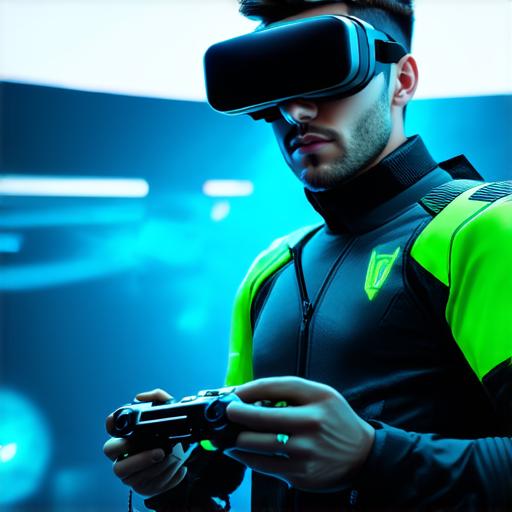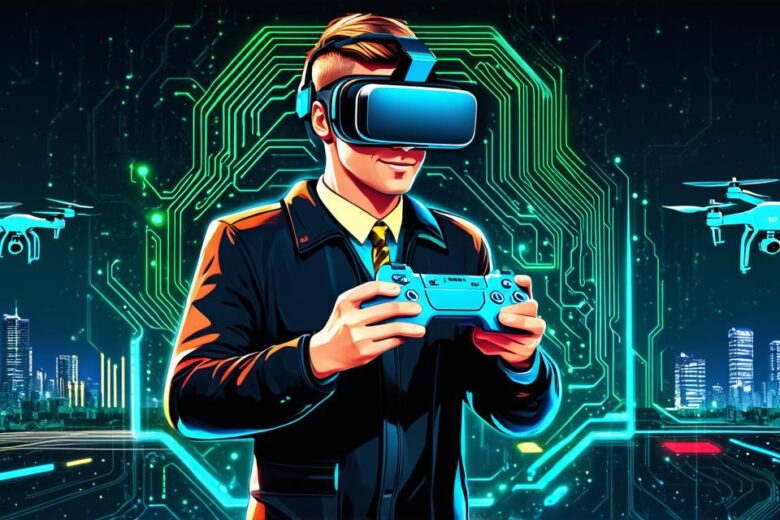The Latest Advancements in Game-Based Virtual and Augmented Reality Technologies: A Comprehensive Guide for AR Developers
1. Introduction
Virtual and augmented reality technologies are becoming increasingly popular in various industries, including gaming, education, healthcare, and more. The growth of these technologies is fueled by advancements in hardware and software, as well as the increasing demand for immersive experiences. In this article, we will focus on game-based virtual and augmented reality technologies, discussing their latest developments and applications in the gaming industry.
2. Virtual Reality Games
Virtual reality (VR) technology allows users to fully immerse themselves in a digital world, where they can interact with virtual objects and environments. VR games offer a unique experience that blends realism and imagination, allowing players to explore new worlds and engage in exciting gameplay. Some of the latest VR games include:
- Beat Saber – A rhythm game that uses hand-held controllers as light sabers to slash through blocks that represent musical beats.
- Half-Life: Alyx – A first-person shooter game that uses room-scale VR technology to create a highly immersive experience.
- Resident Evil 7 – A survival horror game that uses VR technology to create a terrifying and unsettling atmosphere.
3. Augmented Reality Games
Augmented reality (AR) technology allows users to overlay digital content onto the real world, creating an interactive and immersive experience. AR games offer a unique blend of real-world environments and virtual gameplay, allowing players to engage with their surroundings in new and exciting ways. Some of the latest AR games include:
- Pokémon Go – A mobile game that uses AR technology to allow users to catch virtual creatures in real-world environments.
- Ingress – A sci-fi game that uses AR technology to create a global competition between two factions vying for control of virtual territories.
- Snapchat Filters – A social media platform that uses AR technology to add filters and effects to photos and videos, allowing users to enhance their visual content.
4. Case Studies in Game-Based Virtual and Augmented Reality Technologies
a. Pokémon Go – The wildly popular mobile game has become a cultural phenomenon, with millions of users worldwide engaging in the game’s immersive AR experience. The game’s success has paved the way for other AR games and has inspired new ways of integrating AR technology into daily life.
b. Half-Life: Alyx – The first VR game to be released on Valve’s Steam platform, Half-Life: Alyx has received critical acclaim for its highly immersive and engaging gameplay. The game’s success has demonstrated the potential of VR technology in the gaming industry and has inspired other developers to explore new ways of using VR in their games.
5. Expert Opinions
a. “Virtual and augmented reality technologies are the future of gaming, offering players a level of immersion that was previously unimaginable,” said Shawn Layden, President of Sony Interactive Entertainment America. “As these technologies continue to evolve, we will see even more exciting and innovative games emerge.”
b. “The use of virtual and augmented reality in gaming is just the beginning. These technologies have the potential to revolutionize a wide range of industries, from education to healthcare,” said Dr. Michael Goodchild, a pioneer in geographic information systems and remote sensing.
6. Real-Life Examples
a. Virtual try-on – Many retailers are using VR technology to allow customers to virtually try on clothes and makeup before making a purchase. This technology offers a more accurate representation of how the products will look on the customer, reducing the number of returns and increasing customer satisfaction.
b. Augmented education – Some schools are using AR technology to enhance the learning experience for students. For example, AR can be used to create interactive lessons that allow students to explore virtual models of historical artifacts or scientific concepts.

